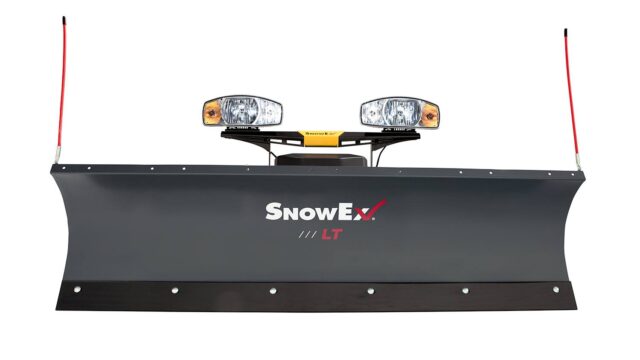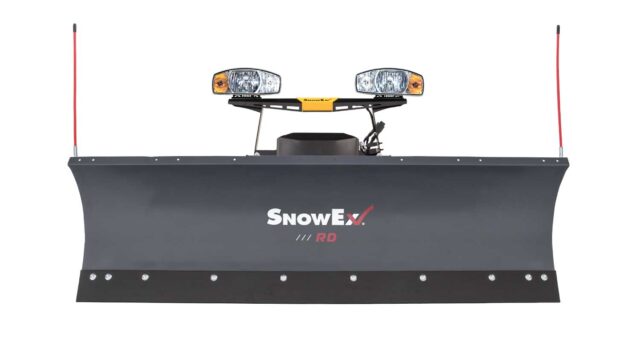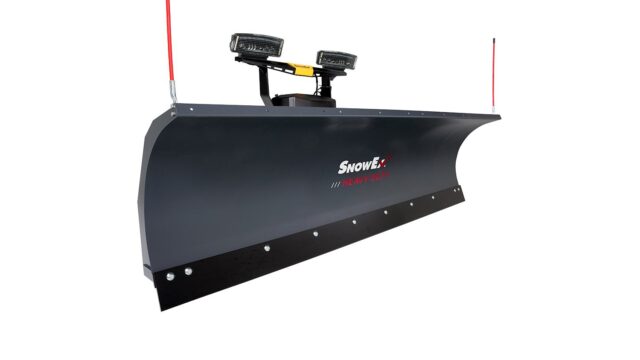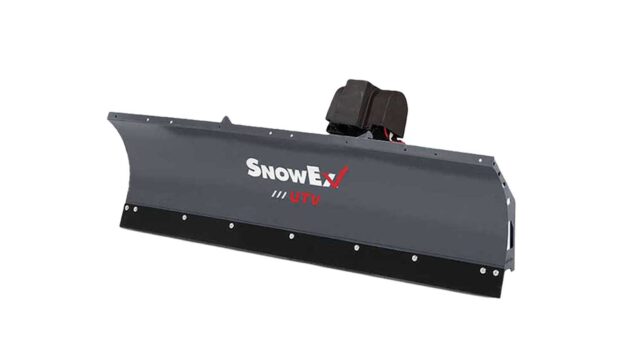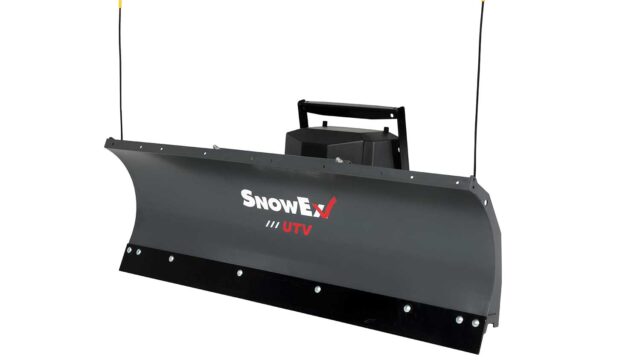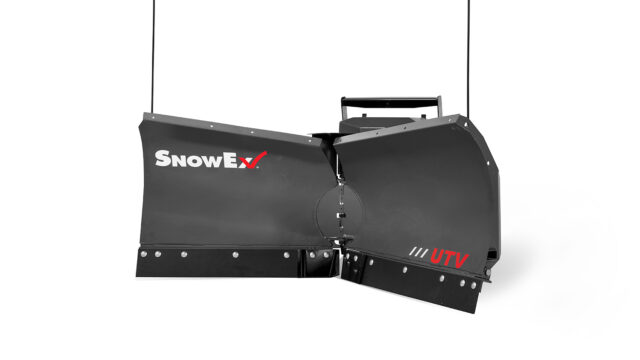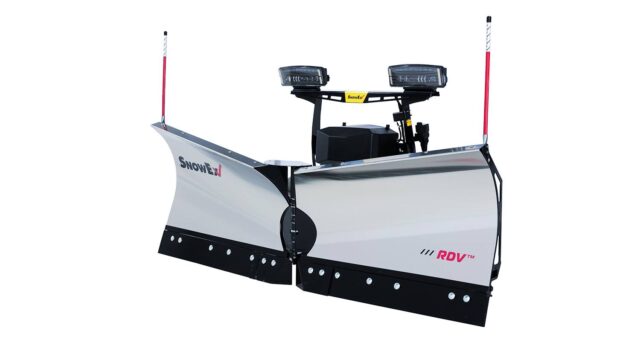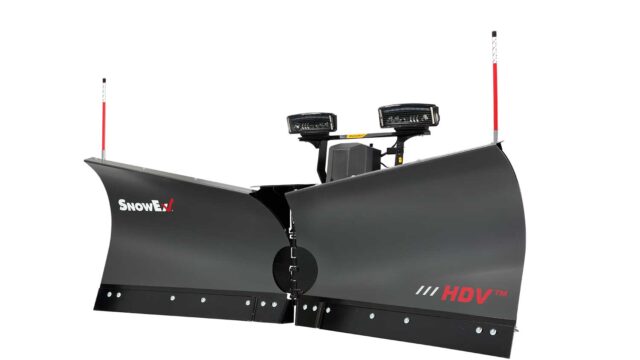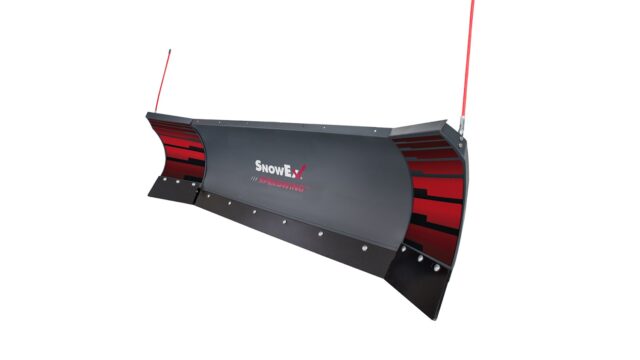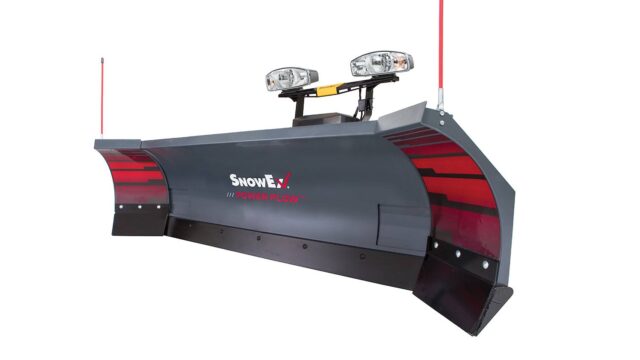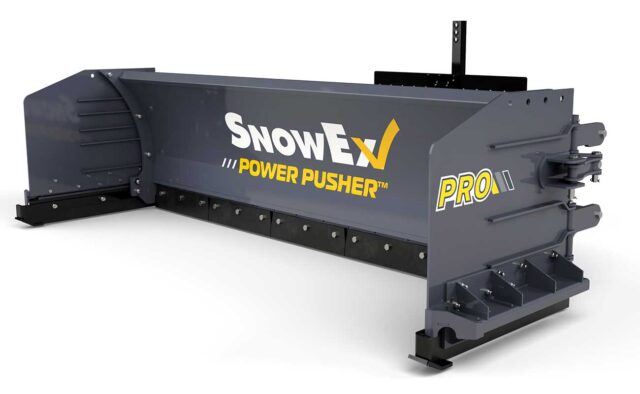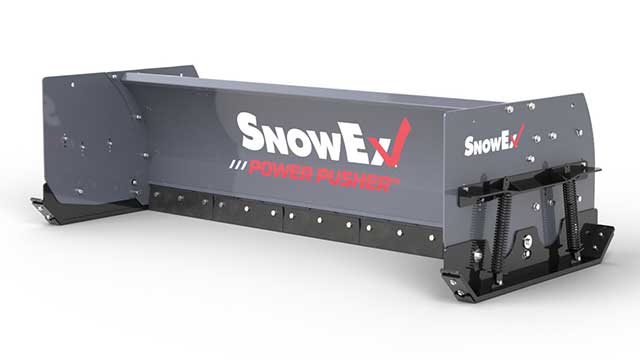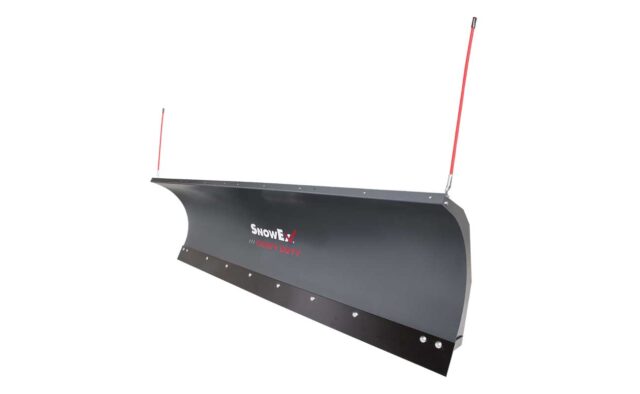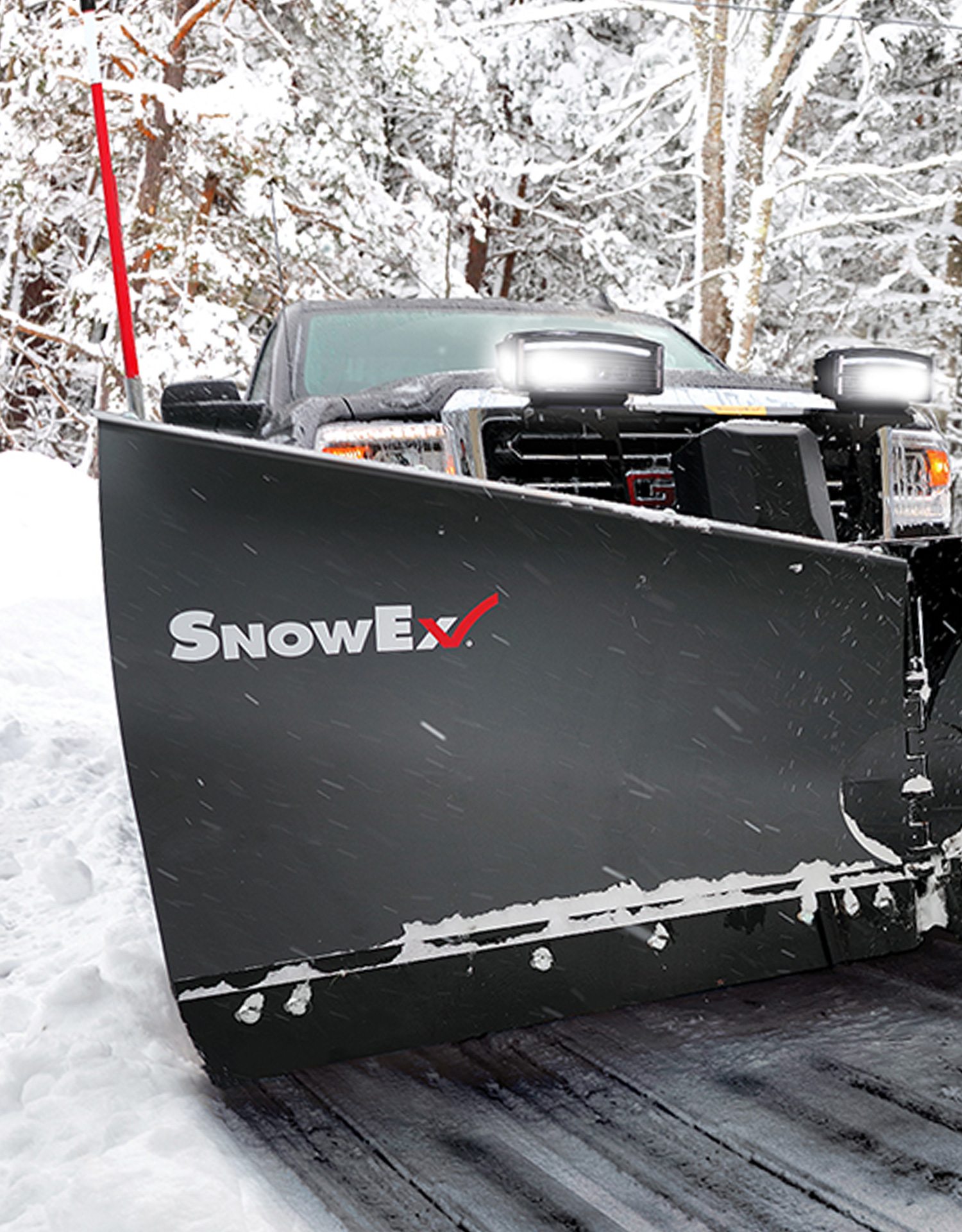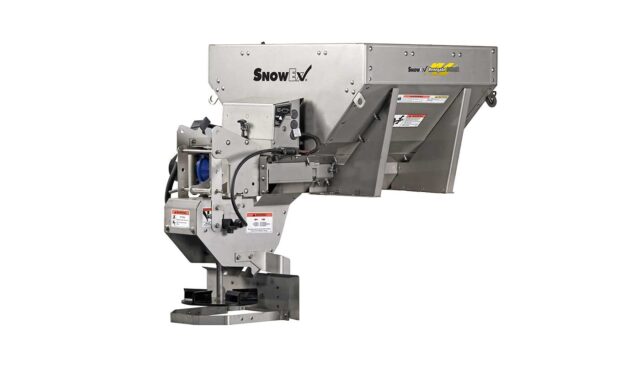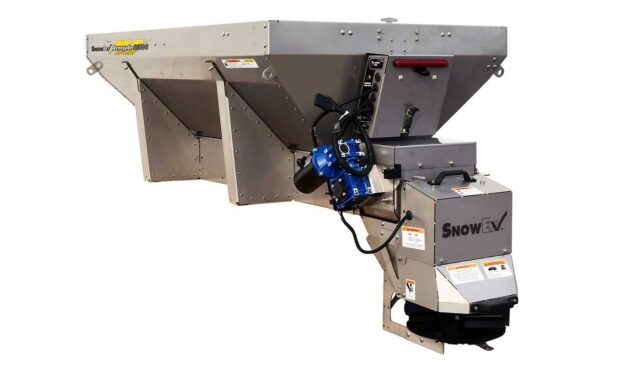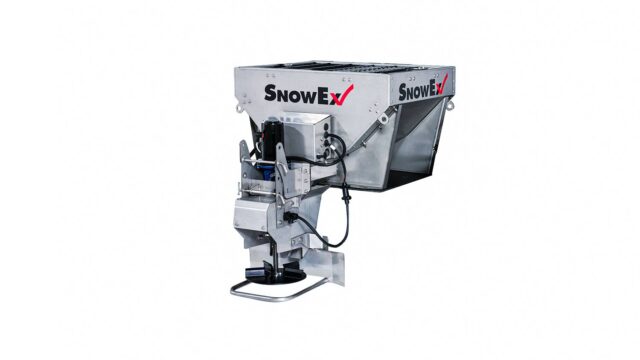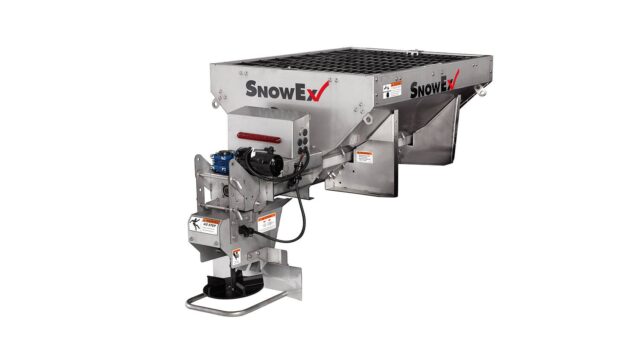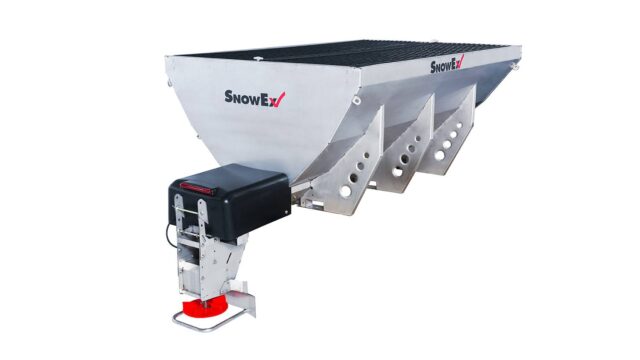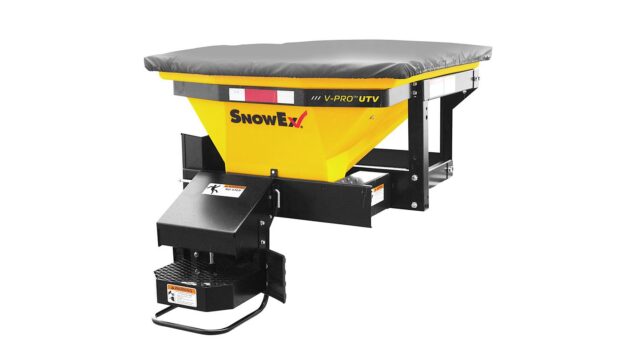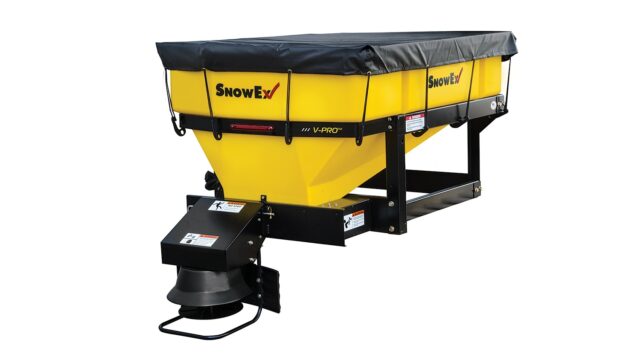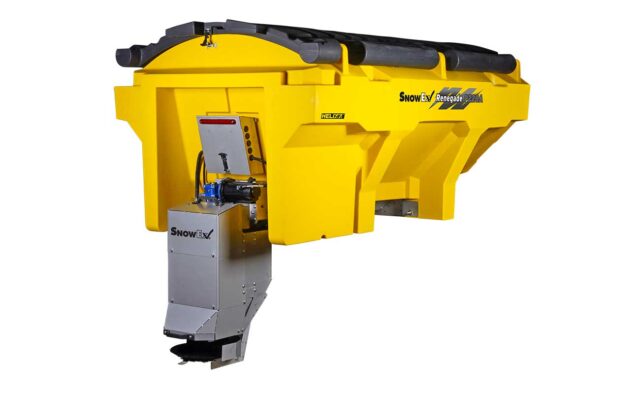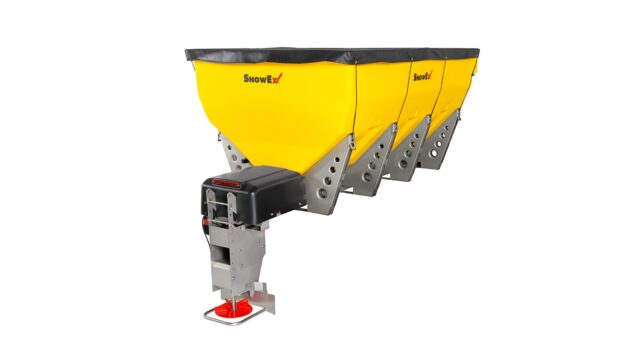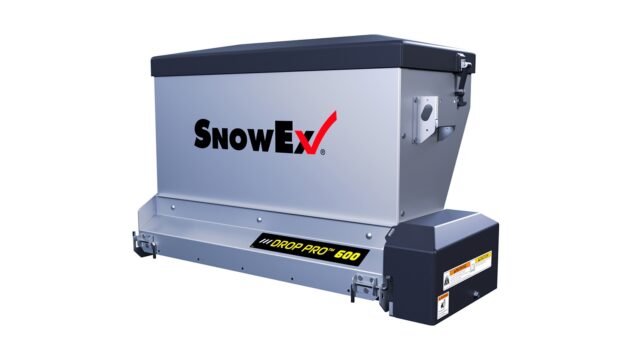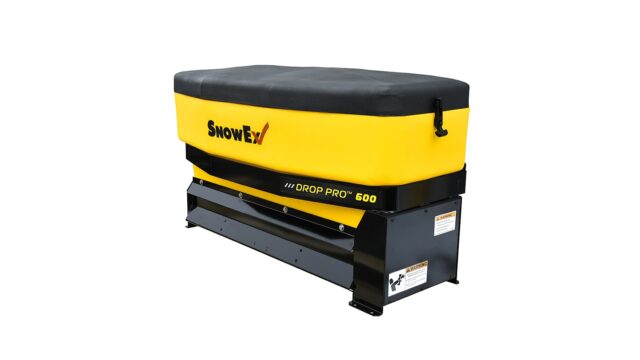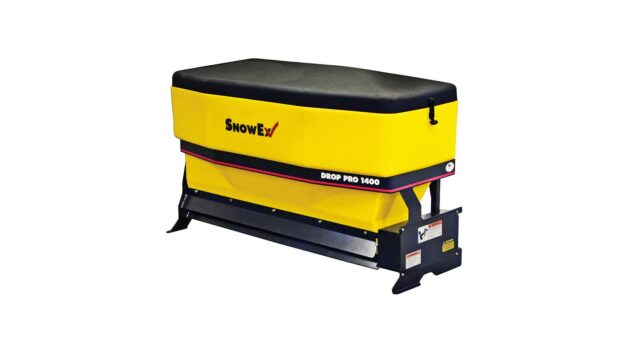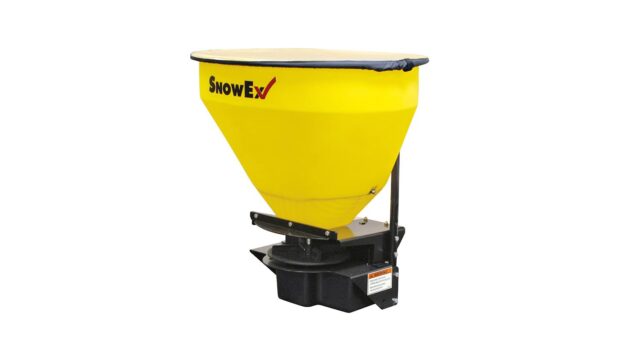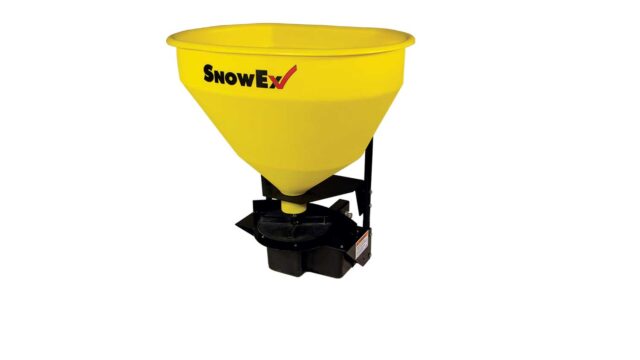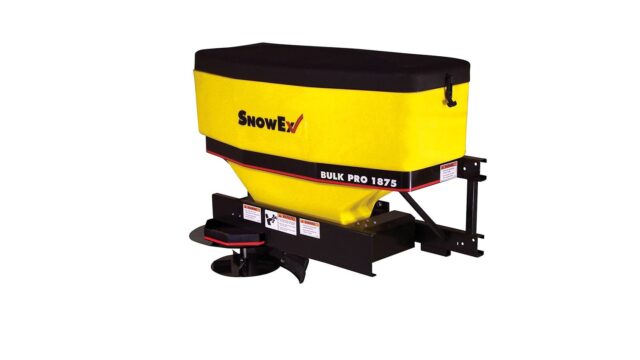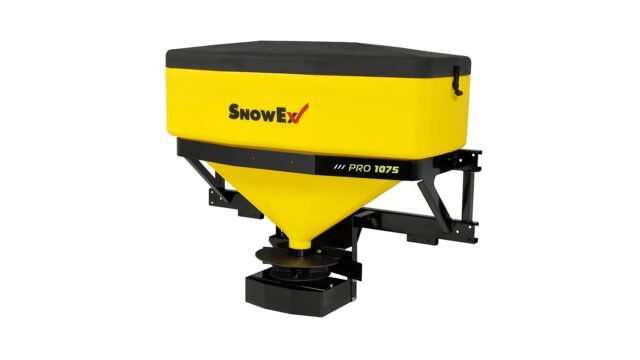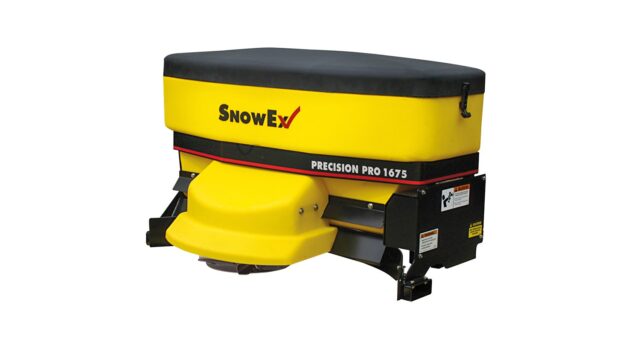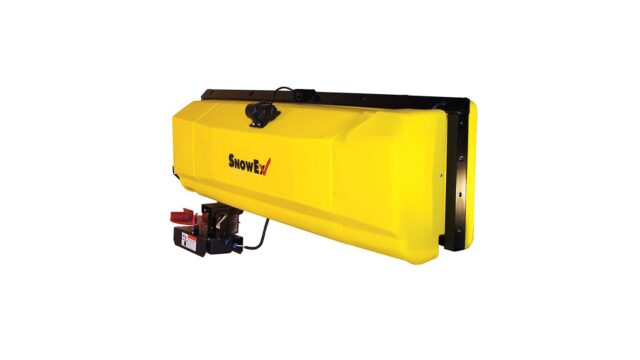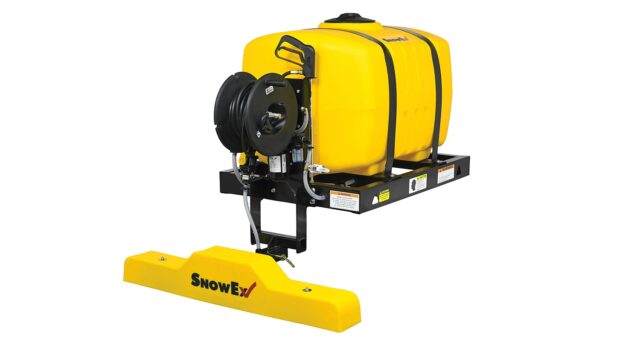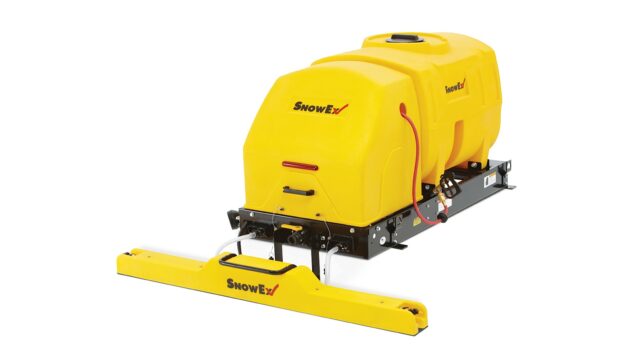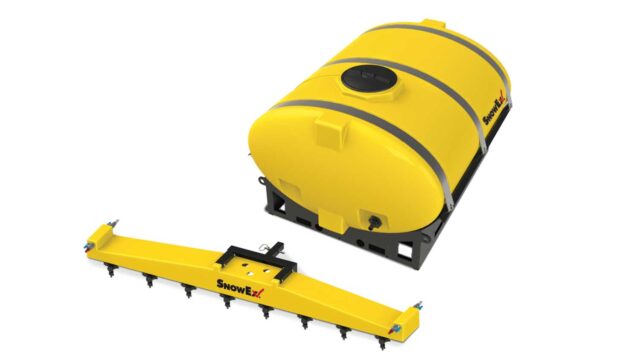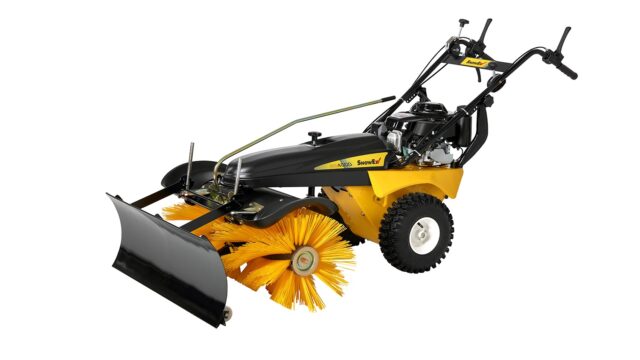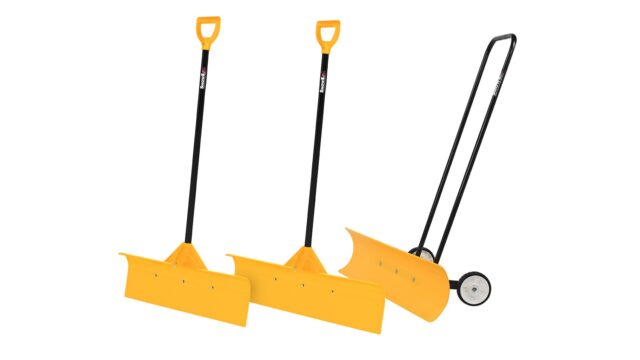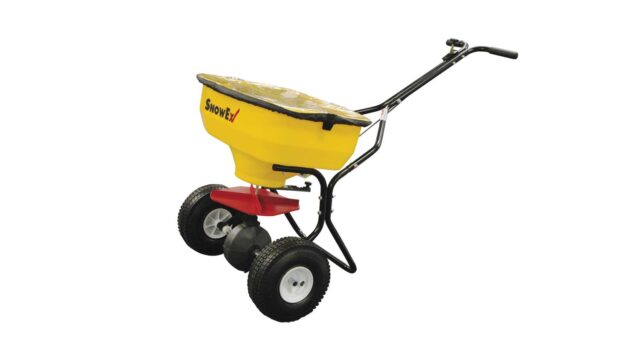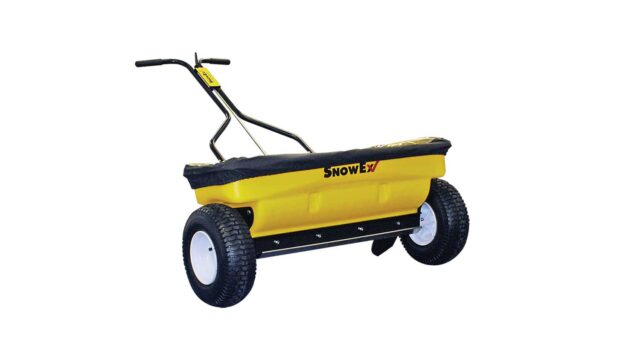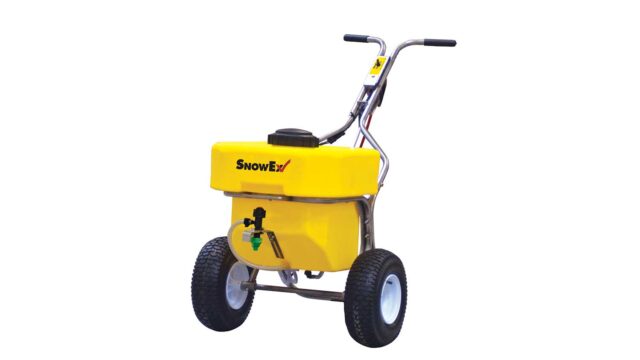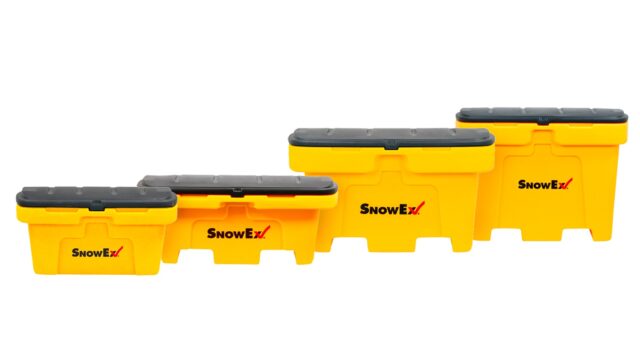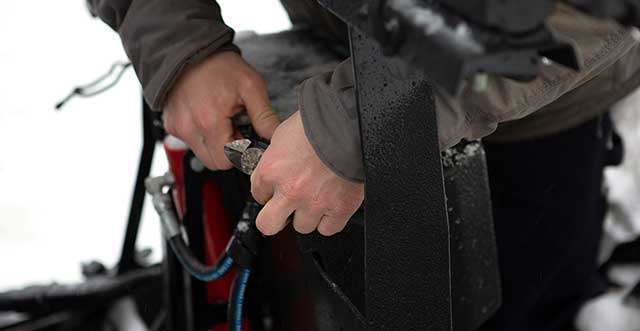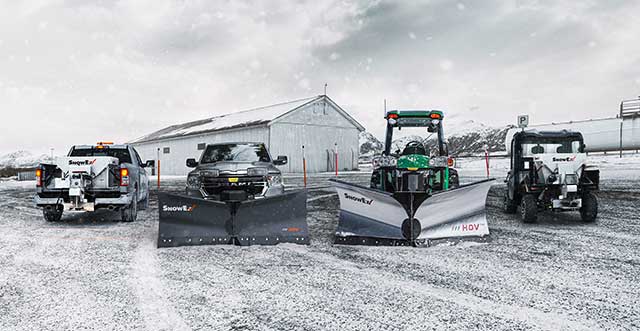How to Select the Ideal Salt or Sand Spreader for Ice Control
Created March 19, 2020
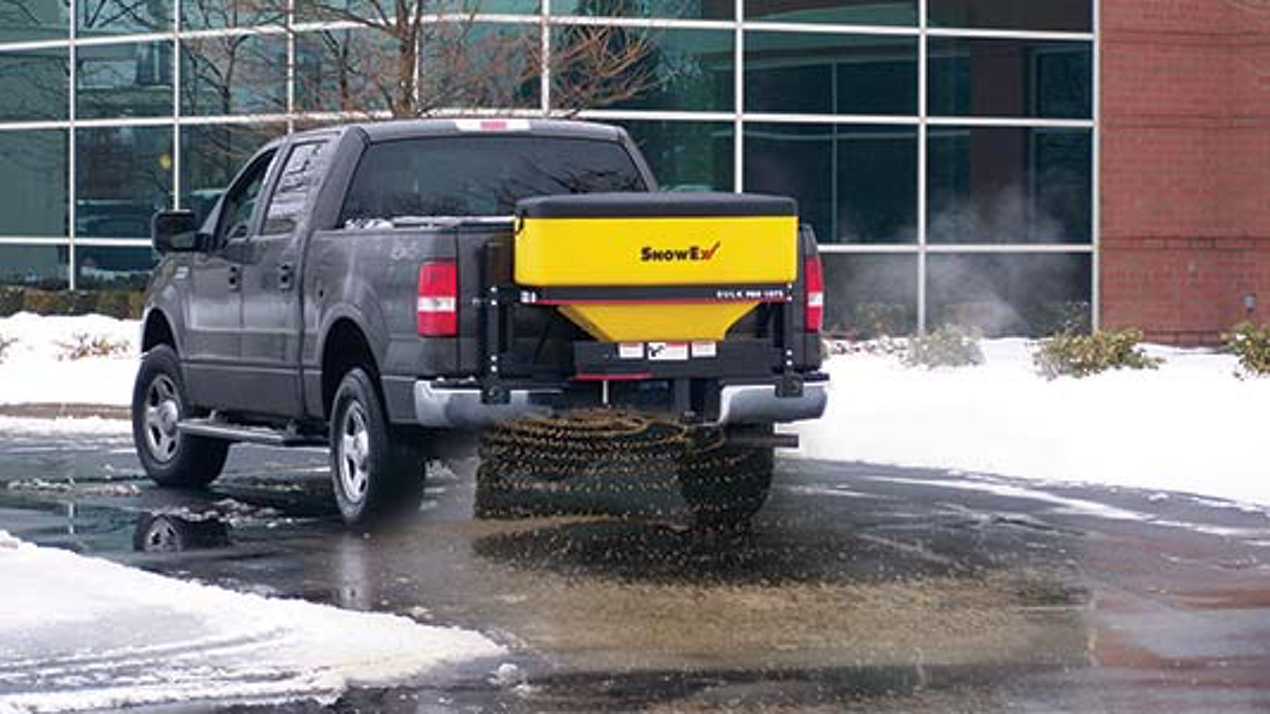
On the surface, material spreading doesn’t seem all that complex. Buy a spreader, fill it with deicing material and go to work. Simple, right? Yes — provided you have the right equipment for the job. But too often contractors fail to consider the big picture when selecting a spreader, leading to anything from minor headaches to major issues.
Selecting a material spreader is hardly rocket science. But it does require one to examine a number of factors to correctly determine which model will enable a winter maintenance business to be efficient and profitable, both initially and for the long term.
Salter or Sander? Material Type Matters
Many contractors go about the spreader selection process by considering capacity, and sometimes they never get around to thinking about anything else. Obviously how much material a spreader can hold is a major piece of the puzzle, but it’s a consideration that must wait its turn in the selection hierarchy.
First and foremost, the contractor should determine what kind of material he will be spreading. Bulk salt is generally regarded as the industry mainstay because of its ability to melt ice quickly and effectively. Bagged salt is the primary choice for smaller spreaders for the same reason. Some geographic areas of the county prefer sand because of the traction it provides on a driving surface, although it doesn’t melt ice. Many contractors utilize a salt/sand mix to get some of the benefits of both materials at once.
Certain customers or locations may want their winter maintenance contractor to use specialty deicing materials for various reasons. Magnesium chloride is spread in parking garages because it doesn’t corrode the rebar in the structure’s precast concrete panels. Calcium chloride pellets are usually called upon for sensitive concrete surfaces, around doorways or on brick pavers.
Spreaders are available in just about every capacity imaginable, but material matters first. A seemingly correctly sized unit can be extremely wasteful if it allows too much of the wrong material to flow. It could also be completely worthless if it’s unable to put out any material at all. Many spreaders are capable of handling a variety of materials, but even the most versatile spreader won’t effectively apply every type of available material.
Contractors must understand up front that if they have a wide array of clients, it’s possible that deicing material requirements may dictate they purchase several different spreaders to service them. The simpler and more cost-effective alternative, of course, is lining up similar accounts that utilize the same type of spreading material.
Sizing Up Spreader Capacity
It’s certainly wise for a contractor to bunch his clients closely together instead of chasing all over town to provide service. It’s also helpful for those clients to be of similar size. This can’t always be perfectly accomplished, but giving due consideration to both factors should allow a winter maintenance company to operate more efficiently. Once a contractor establishes a route and is able to narrow down the field of spreaders to those designed to spread a given type of deicing material, he can make a determination on the capacity of spreader needed.
The gamut of spreader sizes runs from 75-pound capacity push spreaders all the way to four-cubic-yard truck-mounted units that hold nearly 8,000 pounds of material. In between, styles range from smaller tailgate units that connect to a vehicle’s two-inch receiver mount or three-point hitch mount, to an assortment of v-box style models that rest inside a truck bed.
Tailgate Versus Hopper Spreader
A contractor handling smaller jobs — such as residential driveway and sidewalk applications or facilities with tight corners or confined areas — would likely want to use a small tailgate spreader to enable better visibility and more efficient operation. Using a large spreader in these situations would make it more difficult to maneuver the vehicle and material may be wasted in the process. Additionally, using bigger equipment means more fuel consumption, another expense that may not be necessary in a given application.
For larger jobs, such as big parking lots, a v-box style spreader will be more effective. Many contractors try to save money by purchasing too small of a spreader, but they can quickly find themselves incurring far more in unnecessary costs. The biggest problem with inadequate capacity is the need to constantly stop and refill the spreader. This equates to less time on the job, reduced productivity and potentially a group of unhappy clients. This is also another situation where more fuel will be consumed in the process of driving around to get more material.
In addition to determining what equipment is appropriate for the size of each single job, a contractor should figure out the total amount of material that needs to be put down over the entire customer route. If the total is just one cubic yard, for example, it wouldn’t make much sense to buy a spreader with a capacity of two cubic yards. Conversely, if the route requires eight cubic yards, a spreader that holds just one cubic yard isn’t big enough. Both the individual jobs and route as a whole need to be considered with the other in mind to strike the right balance of operating efficiency.
Material Reload Strategy
Some contractors will place a fair amount of importance on their plan for reloading the spreader. In the case of spreaders that occupy the entire bed of a pickup, there’s no option for carrying extra deicing material outside of the spreader. Instead, contractors will either have their own supply of bulk salt or other material at their headquarters, or they will visit a landscape supply center each time they need to reload.
Those using tailgate spreaders can load their empty truck beds with bulk or bag material and then reload their spreaders as needed while out on the job. A swing-away tailgate spreader is another option for those who’d like to load material without having to remove the unit. It’s unlikely a contractor would take a purchase decision in a completely new direction based on a reloading situation, but it is certainly a factor to take into account.
Spreader Design: Poly or Stainless Steel?
Once a contractor has determined what deicing material to spread, what capacity is needed and what mounting style will work best, the list of spreaders that will suit his business should be significantly narrowed to a handful of models from various manufacturers. But one more set of differentiating factors remains: the construction of the spreader itself — and how this design affects overall spreading performance.
Though the industry trend increasingly has been toward spreaders made of polyethylene (poly), steel and stainless steel units remain options on the market. There are a number of points of comparison among these three choices, and durability tends to be at the top of the list.
In terms of pure material strength, the debate among poly, steel and stainless steel has essentially been reduced to a toss-up, with neither material offering an actual advantage. When considering overall durability, steel spreaders are naturally the most susceptible to rust and corrosion issues. Steel and stainless steel share the disadvantage of incorporating several moving parts — such as belts, sprockets and chains — and an engine that must be maintained. Many poly spreaders are electric powered and don’t typically require such parts, nor the need for the maintenance that goes along with them.
Necessary maintenance is more than just a time stealer; it can also translate into a major expense over the lifetime of a spreader. Spreaders heavy on parts like belts, chains and pulleys rarely can be put right to work after the off-season. They almost always require preseason maintenance, whether it’s engine repair, parts replacement or a paint job. Contractors anticipate this and many will budget $400 in parts and labor per spreader just to get the equipment up and running before a new season begins. In-season maintenance is a whole different matter that also may lead to a fair amount of cost. Conversely, poly spreaders with fewer parts require less work to get going after the off-season, and in many cases require almost no tuning up at all. And as the number of spreaders in a contractor’s fleet grows, so does the gap in maintenance costs from one style to the next.
Vehicle Weight Rating Could be Determining Factor
Equipment weight is another issue for comparison. Poly weighs significantly less than steel, offering poly spreader users the opportunity to load greater amounts of deicing material — up to 500 pounds in many cases — before reaching the designated gross vehicle weight rating (GVWR) for a particular vehicle. With law enforcement cracking down more than ever on overweight vehicles, it’s important for contractors to ensure they’re in GVWR compliance when traveling with a loaded spreader. And by allowing for more material to be carried every time the spreader is loaded, a lighter weight poly spreader enables contractors to spend more time servicing clients and less time driving back and forth to reload.
Less weight on a truck also means better gas mileage and lower fuel costs. According to fuel economy statistics published by the Environmental Protection Agency, eliminating 10-percent of a vehicle’s total weight can improve mileage by 7-percent. Over the course of several snow events, and depending upon the total number of vehicles in a contractor’s fleet, fuel savings can really add up with a lighter weight spreader.
Material Flow & Spreader Performance
The construction of a spreader also has a big impact on how well material will flow out of the spreader and onto the target surface. Poly is smooth and naturally slippery, allowing material to slide without catching. Steel and stainless steel are much rougher by comparison, and material will catch more easily on the sides of spreaders constructed of these metals. Material flow is further restricted by any rust that appears on steel spreaders.
Spreader design elements can also affect material flow. While a gravity-fed spreader can get the job done when applying dry, smaller-sized bag material, a spreader needs a system to keep material flowing when clumpy bulk material is being used. But not all material movement methods are created equal. Some conveyor belt systems will pull too much material and overload the discharge shoot. And because conveyors drop material in sporadic sheets, they often end up wasting a lot of material. As a drag chain conveyor goes underneath after dumping material, it also tends to pull material back into the truck bed, creating further waste.
Because material clumping together is the biggest obstacle in material flow, some more efficient designs use a vibrator as part of a multi-angled hopper to help chisel and break up the material. These spreaders also feature an auger system that delivers a consistent flow of material to a precise spot on a spinner. The end result is an ideal spreading pattern with almost no wasted deicing material. The efficiency of the auger system directly cuts down on unnecessary cost to the contractor.
Spreader Controls & Material Consumption
Spreaders have different abilities when it comes to controlling the manner in which deicing material is applied. In many cases there may be a single lever used to control both the flow rate and the spinner speed. This might work in conjunction with a manually adjustable rear gate that could be lowered to reduce flow. One issue with this arrangement is that drivers must get out of the cab to lift or lower the gate, and even then it’s difficult to make precise adjustments — allowing for a strong probability that too much or too little material will be put down. Another problem is that drivers must constantly slow down or speed up to put down a heavier or lighter application. This not only involves a lot of guesswork, but also could create a hazardous driving situation if the operator is more focused on material flow than his surroundings.
A more logical system provides independent controls for the auger and spinner in the convenient comfort of the truck cab, allowing for faster adjustments on the fly. Flow can be increased or decreased as needed by dialing the auger to a faster or slower speed. These changes to flow rate can be made without affecting spread width, which has its own adjustment. Being able to control these two aspects of material application independently allows for more variation and flexibility, whether it’s adapting to the varying degree of snowfall throughout the course of an event or simply making logical adjustments to account for the differences from job to job.
An auger system with independent controls allows a driver to control and know exactly how much material is being put down in a given area. Contractors who’ve switched to this system estimate that they’ve cut the use of bulk material by 20- to 30-percent because of the ability to be more precise with material application.
To see how this adds up in cost savings, take an example of contractor who currently puts down 10 tons during a typical snow event and pays $80 a ton for bulk salt. By reducing material use by 30-percent, his costs drop from $800 to $560. Furthermore, the material savings will likely mean at least one fewer trip to reload during an event. If one hour worth of reloading time can be eliminated and dedicated to additional service — at a rate of $200, for example — a contractor is looking at an overall gain of $440 per snow event. Assuming 30 spreader events in a season and that’s $13,200 added back to the bottom line through material and time savings.
The Right Choice in Spreader Selection
So following all of these differentiating factors, what’s the right choice for your operation? The most critical thing a contractor can do when selecting a spreader is to remember that it’s a business investment. Cutting corners on purchase price and failing to meet the basic needs of a winter maintenance program will only lead to a smaller return on investment and a lot of dissatisfaction. Take the time up front to examine each aspect of a spreader — from capacity and the materials it can handle to how it’s built and how it performs — and you’ll be ready to make a choice that will reward you for many winters to come.
